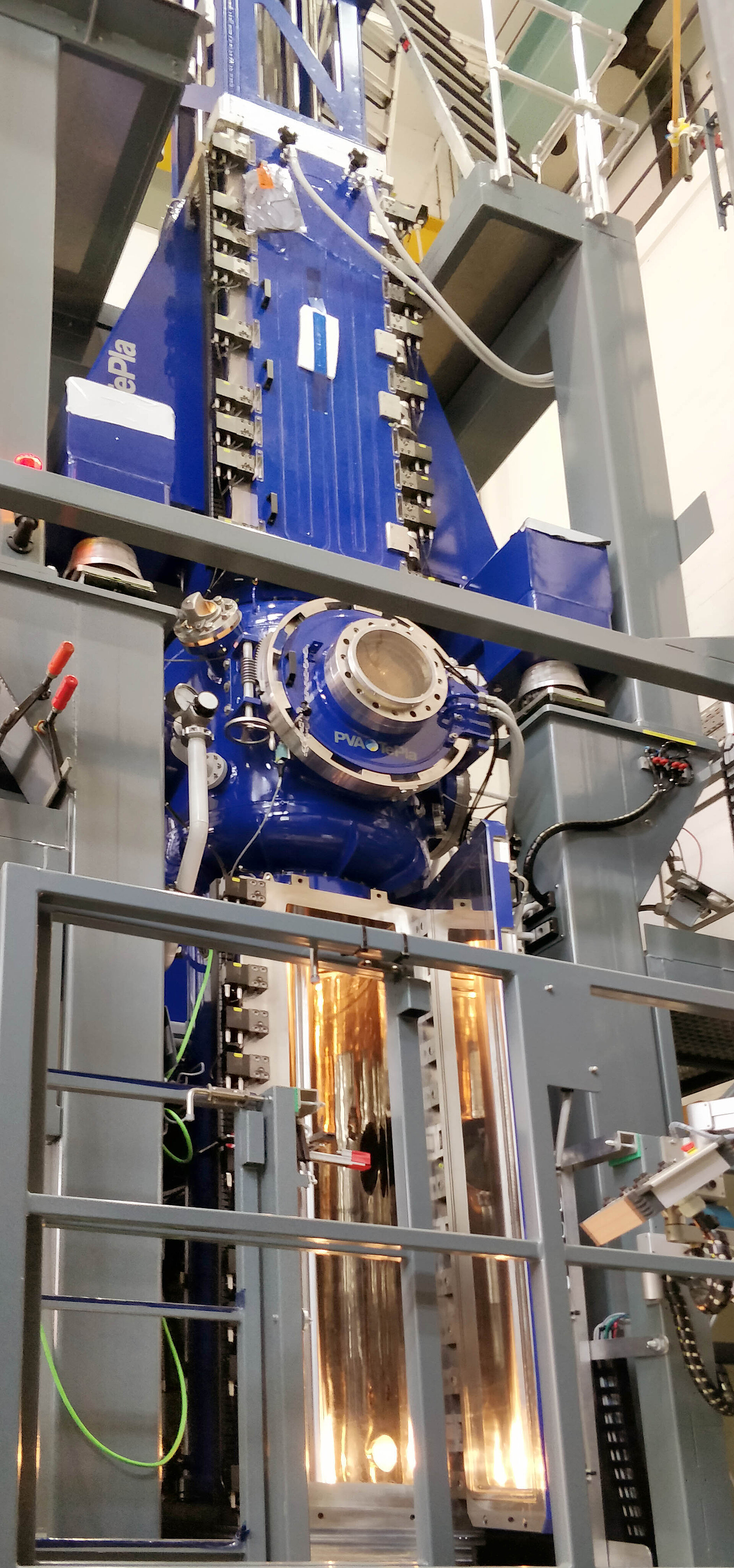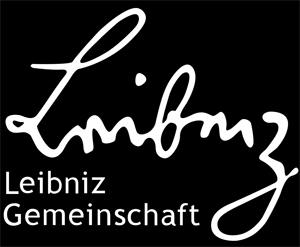Size matters – Larger diameter wafers allow for more die per wafer. In the production of high-power semiconductors, with very low content of impurities as oxygen and carbon, the wafer diameter is limited by the FZ process. Power semiconductors (IGBT, MOSFET) are used throughout the entire energy value chain, from electricity generation, its transmission to its use, e.g. in e-mobility. In consideration of climate change, power semiconductors are gaining in importance as they enable sustainable solutions using intelligent energy management.
The modern crystal growth furnace FZ-30 was funded by the Leibniz-association, in frame of a so called “Sonder-tatbestand“, and built by the company PVA-TePla in Jena, Germany. The technological demands for the furnace with a height of 12 m and a total weight of 20 t are challenging. For example, during growth the silicon rods with a weight of more than 100 kg must be moved absolutely vibration-free with millimeter accuracy. In comparison to the three existing FZ furnaces at IKZ, the advanced mechanics of the FZ-30 not only allow the growth of crystals with larger diameter but also at higher process stability and with increased dopant homogeneity in the crystal. The growth chamber withstands an overpressure of the inert gas atmosphere of 3 bar. This reduces the risk of arcing at high heating power of the induction generator with a maximum capacity of 120 KW. With the help of IKZ know-how, the machine type actually designed for industrial production has been extensively modified for research operation, thus extending the available free parameter space for new FZ process development. Additional feedthroughs and process equipment as infrared heaters were added to the growth chamber. The FZ process can be operated via the completely new designed user interface or via the semi-automatic control developed at IKZ.
In the future the FZ-30 will serve for the development of FZ processes, for silicon crystals with higher purity and dopant homogeneity, needed for the next generation of high power semiconductors. For a better controllability of the FZ process especially at large crystal diameter, new automatization concepts will be investigated.
More Information:
Robert Menzel
Section Semiconductors


